
Little Feminist Book Club is a monthly book subscription box for kids ages newborn to nine years old. Each month you will receive one to two books to help diversify your bookshelf. Plus, you will also receive hands-on activities and tools to help your book come to life. Subscriptions are offered for ages 0-2, 2-4, 4-7, and 7-9. From Little Feminist:
Only 31% of children's books feature a female character, and only 13% feature a person of color.
This children's book subscription sends books that highlight lesser-represented characters and teaches important life lessons with beauty and nuance.
This review is of the Book Club for ages 2-4 years.
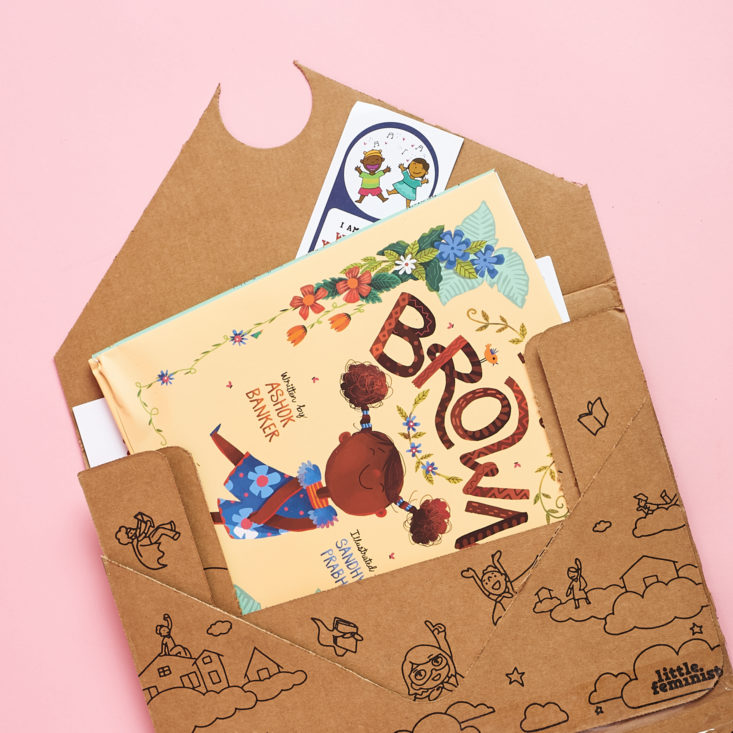
This box was sent to us at no cost to review. (Check out the review process post to learn more about how we review boxes.)
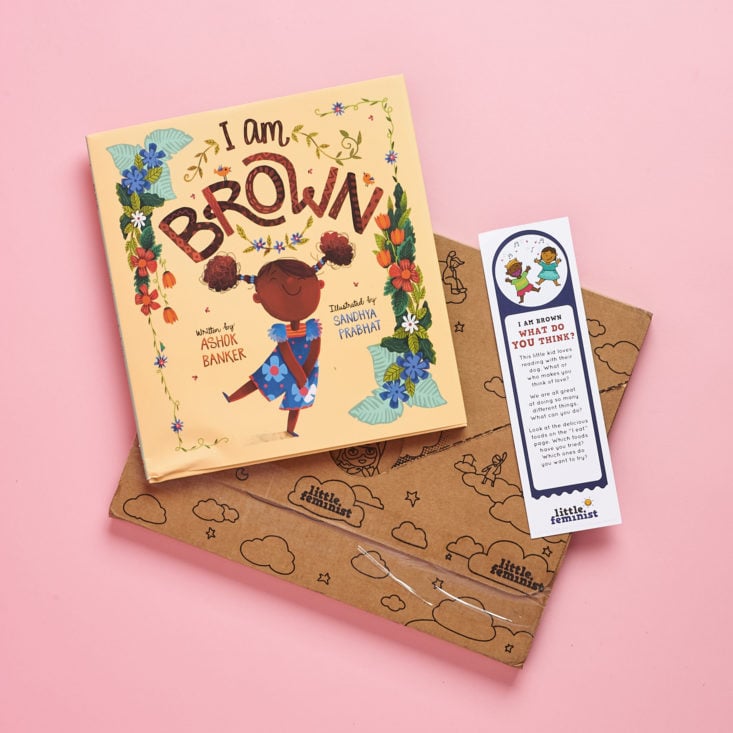
About Little Feminist Book Club
The Subscription Box: Little Feminist Book Club
The Cost: $22.95 per month + $2.95 shipping. Save with longer subscriptions.
The Products: At least one book (sometimes more) and hands-on activities and tools to help bring your book to life.
Ships to: The U.S. for $2.95. Shipping costs may vary for international orders.
Little Feminist Book Club Ages 2-4 February 2021 Review
Little Feminist recently made a change to their age range offerings, which included the addition of a new club for children ages 2-4. On their website it says that some months they'll send a single picture book; others, they'll send two board books. This month my two-and-a-half-year-old daughter, Lorelai, received one picture book.
The book arrived in a slim cardboard box, with this sheet of cardstock that's printed with a February welcome note. The note introduces the book of the month, I Am Brown by Ashok Banker, calling attention to the affirmations throughout it and the way in which it celebrates intersecting identities. On the opposite side are instructions and examples for an adult-led activity. We are guided to observe the differences between ourselves (the adult) and the child. One example given is, "I am a mama. Are you alike or different?" Then, Little Feminist suggests returning to this month's book to do the same activity with some of the characters. An example is, "Someone on this page is from Asia. You are different... let's find where you both come from on a map."
I really appreciate that the activity this month is an interpersonal one providing great language modeling for talking about skin color positively, and for normalizing differences. I have also enjoyed the ideas they've sent for play in the past (especially in the midst of a long winter spent indoors), but this month's offering feels just as beneficial for me as it is for my kid. As someone who seeks out resources for raising an anti-racist child on my own, I sometimes find that the concepts shared can be challenging to implement without examples to use as a jumping-off point. So I'm really grateful for what LF provided here.
I Am Brown by Ashok Banker and Sandhya Prabhat - Retail value $17.99 (found on sale here for $14.99)
This month's book is full of life! It immediately captivated us with its succinct writing style and bursting-with-personality illustrations. The book takes its time highlighting all of the very many things a child—specifically, a brown child—is and can be, which is a beautiful model both for the children represented and for those who look different. It touches on a variety of hobbies, professions, countries of origins and languages, cuisine, places of prayer (including everywhere and nowhere), physical attributes like hair color and style, eye color, and more. For each, there is a repeating cast of kids that are all very expressively doing the activities mentioned, which, if you pay close attention, allows for their unique personalities to shine as you get to know more about them.
As for our experience of reading I Am Brown: the first few times, we read it as written. It sort of reads like a list, which I did as I pointed to each child on the page. In time, we began to explore other ways of reading this book, like taking my time and describing what one kid is up to that suggests he's a budding engineer, or how one little boy's love of swimming led him to find a rock that would be the perfect addition to his collector friend's treasures. Other times we just flipped through together and I had Lorelai notice what caught her eye, and as she pointed, I'd then identify what that kid was doing or what made them unique. There are a lot of options for how to approach this book!
The only part of this book that my husband and I are still figuring out how to navigate with our daughter is the very last page. It says, "I am brown. I am amazing. I am YOU!" Which is a really great way to sum up the many facets that were just celebrated in the book, but it's a little confusing to our two-year-old. She keeps looking at us and saying, "me?" To which we say, erm, well, not really, but kind of. While it is important and valuable to celebrate the similarities she has with children who look different than she does, it's also important not to overdo it and risk promoting color-blindness and removing the nuance of our valued differences. We may begin reading that last bit as "I am a lot like YOU!" so that all the good stuff we just soaked up from I Am Brown isn't lost by dwelling on the specifics of the last page.
Discussion Question Cards
Little Feminist always includes discussion questions in their monthly shipments, printed in bookmark form. This month's series of questions are similar to what I described above—they call our attention to different parts of the book and invite us to notice some of the details. It also asks "and what about you?" types of questions to highlight how people can always find common ground, even when a lot about their lives is different. An example is, "Look at the delicious foods on the "I eat" page. Which foods have you tried? Which ones do you want to try?" Little Feminist encourages us to consider similarities and differences in so many ways this month, and it feels like such a beautiful celebration of the many ways life can look.
Verdict: The Little Feminist Book Club delivered such an uplifting picture book for the 2-4 age range for Black History Month. Our family loves how many dynamic interests, cultures, and appearances are represented, and what a nice job they do of encouraging our young daughter to view differences through a positive lens. We're also having so much fun exploring the different ways this book can be enjoyed: by reading it as written, by describing the fun details of the illustrations, and more.
Value-wise, this subscription costs $25.90 ($22.95 per month + $2.95 shipping). This book, purchased full-price, costs $17.99. On Amazon, it costs $14.99. Depending on which route you go, that's a $7.91-$10.91 difference. Were I to buy this book from my local neighborhood bookstore, I'd be paying the full $17.99—that means I'd be paying $7.91 for the activity idea, the discussion questions, and the convenience of not having to leave my home. On one hand that feels steep; on the other, it's impossible to assign value to the lessons we have been sent on how to live more inclusively and how to minimize harmful biases from a young age. Those insights are outside of a cost value assessment—they are, rather, invaluable and essential. So, to say that $7.91 feels steep for the opportunity to be a better friend, neighbor, community member, world citizen, and person just feels ridiculous.
To Wrap Up:
Can you still get this box if you sign up today? No, you'll likely receive the March box. From Little Feminist:
Once you purchase a book subscription your first box will be shipped within a week. From then on, your book box will be sent the first week of every month.
Check out all of our Little Feminist reviews and our list of the best book clubs for kids!
Keep Track of Your Subscriptions: Add this box to your subscription list or wishlist!
Do you subscribe to Little Feminist Book Club Box?


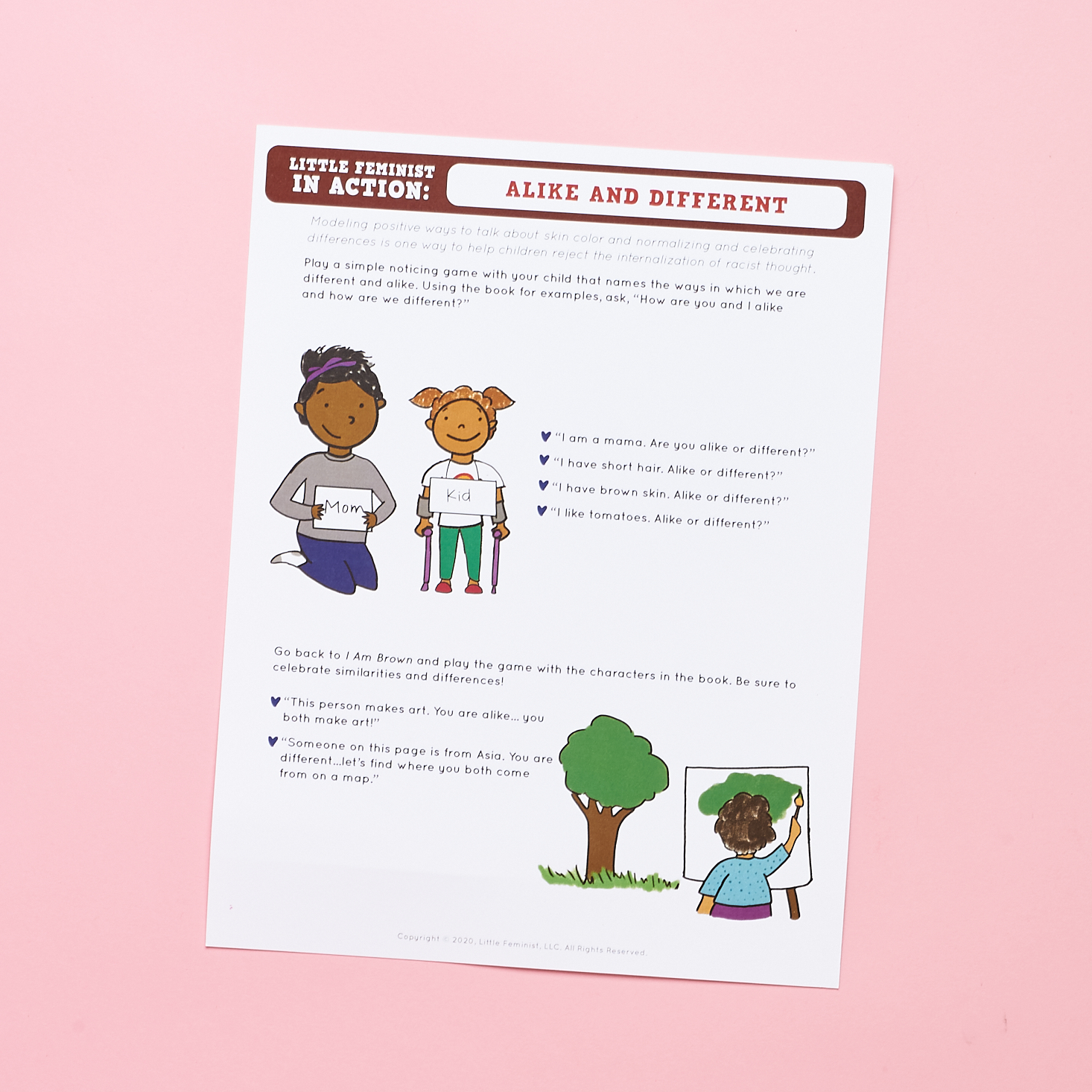
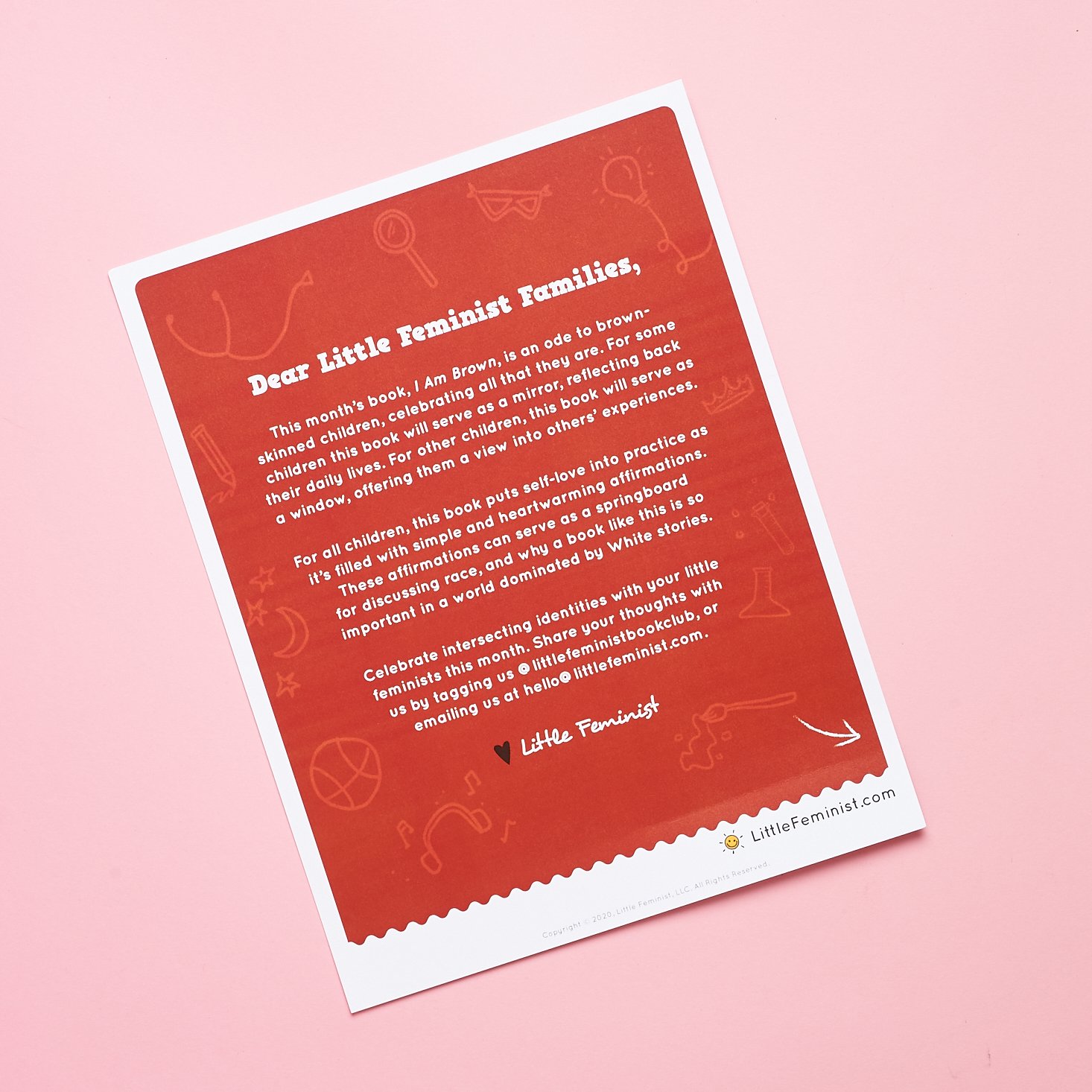
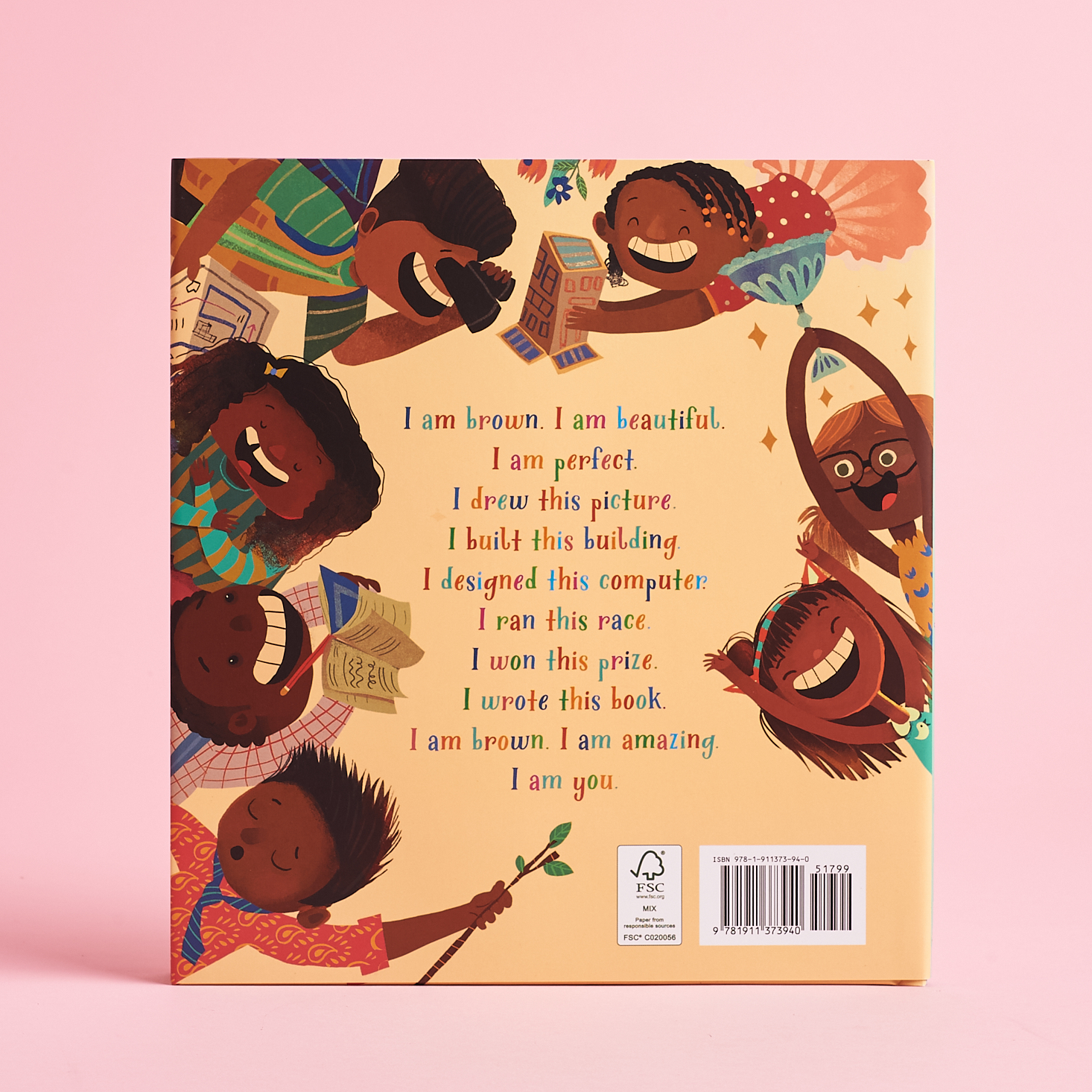

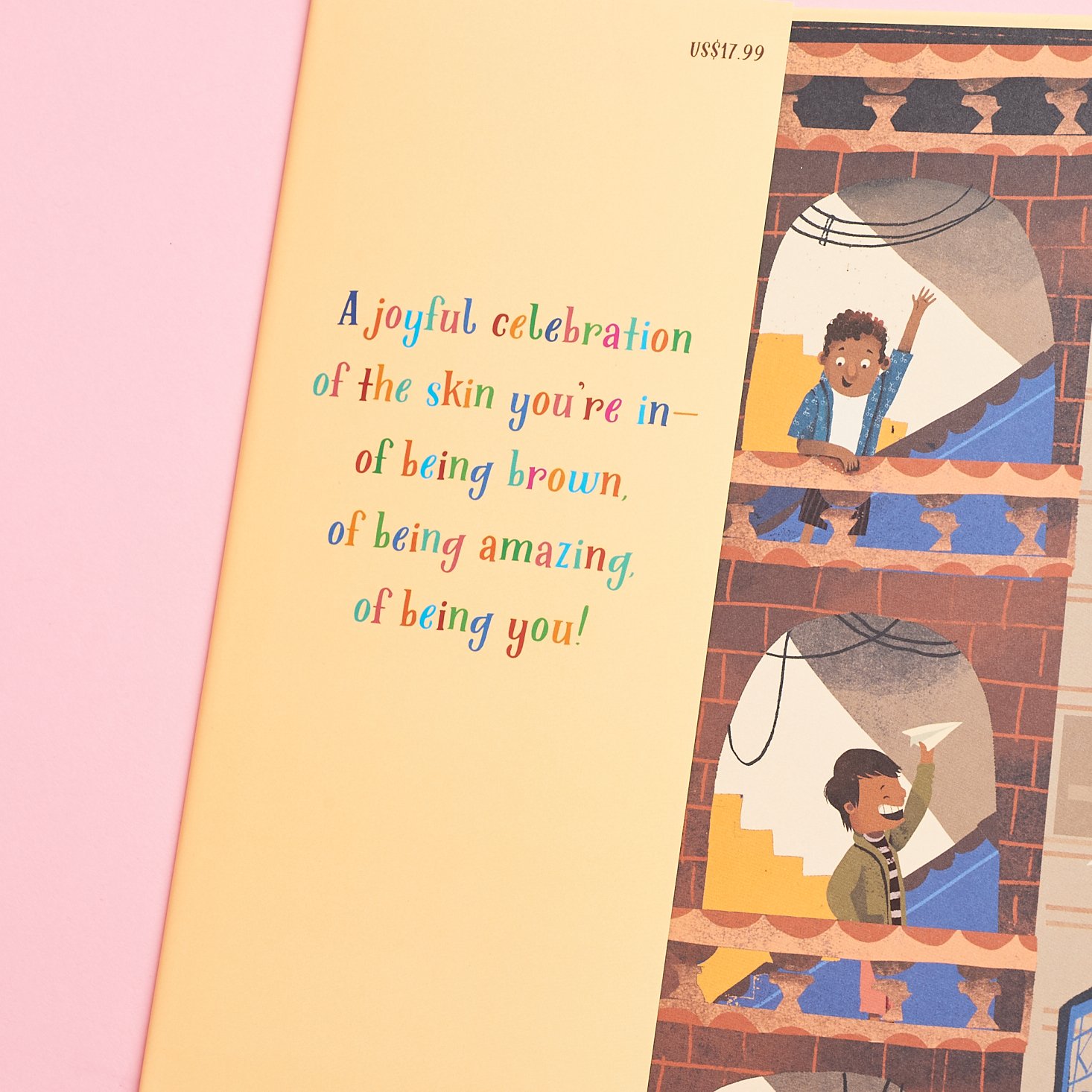
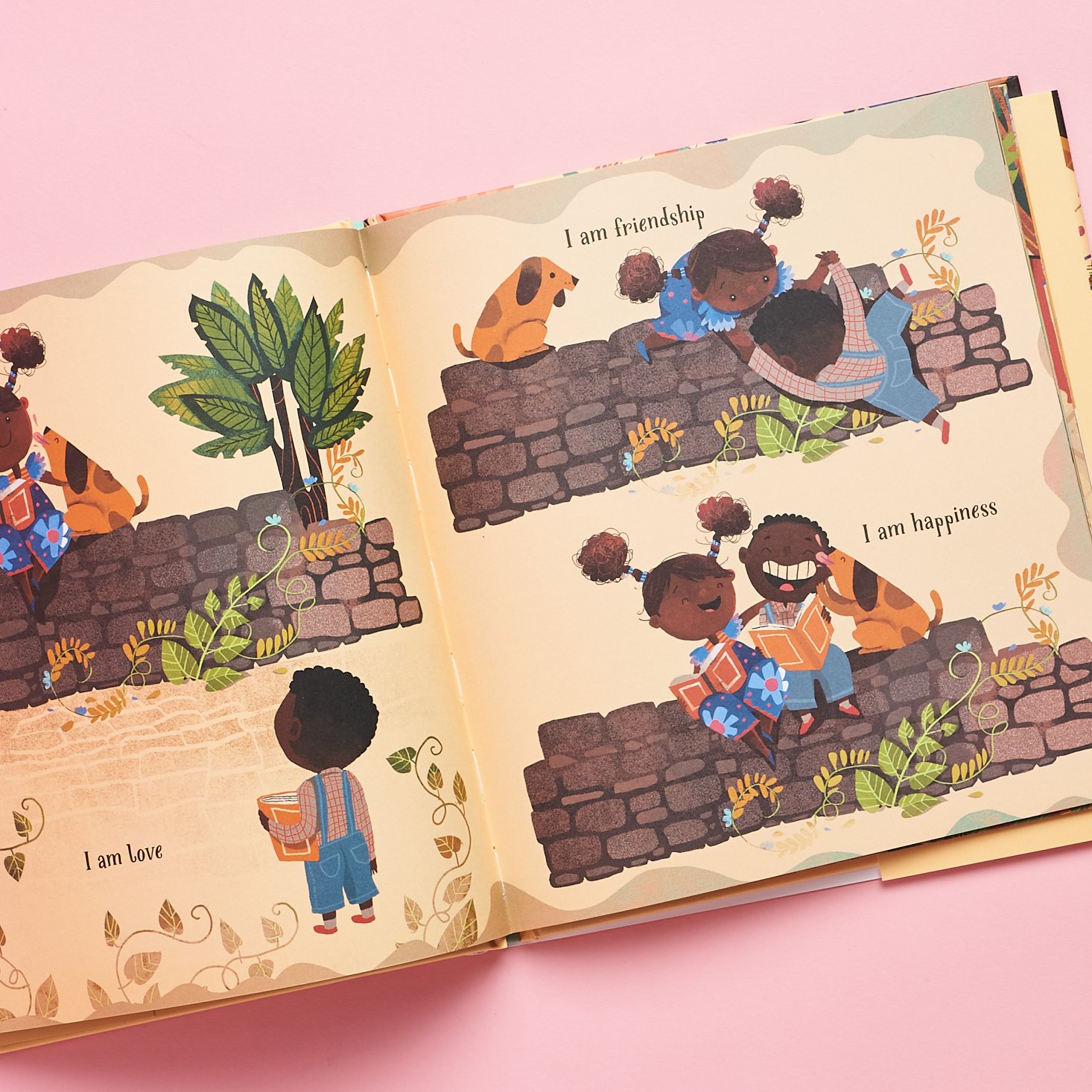
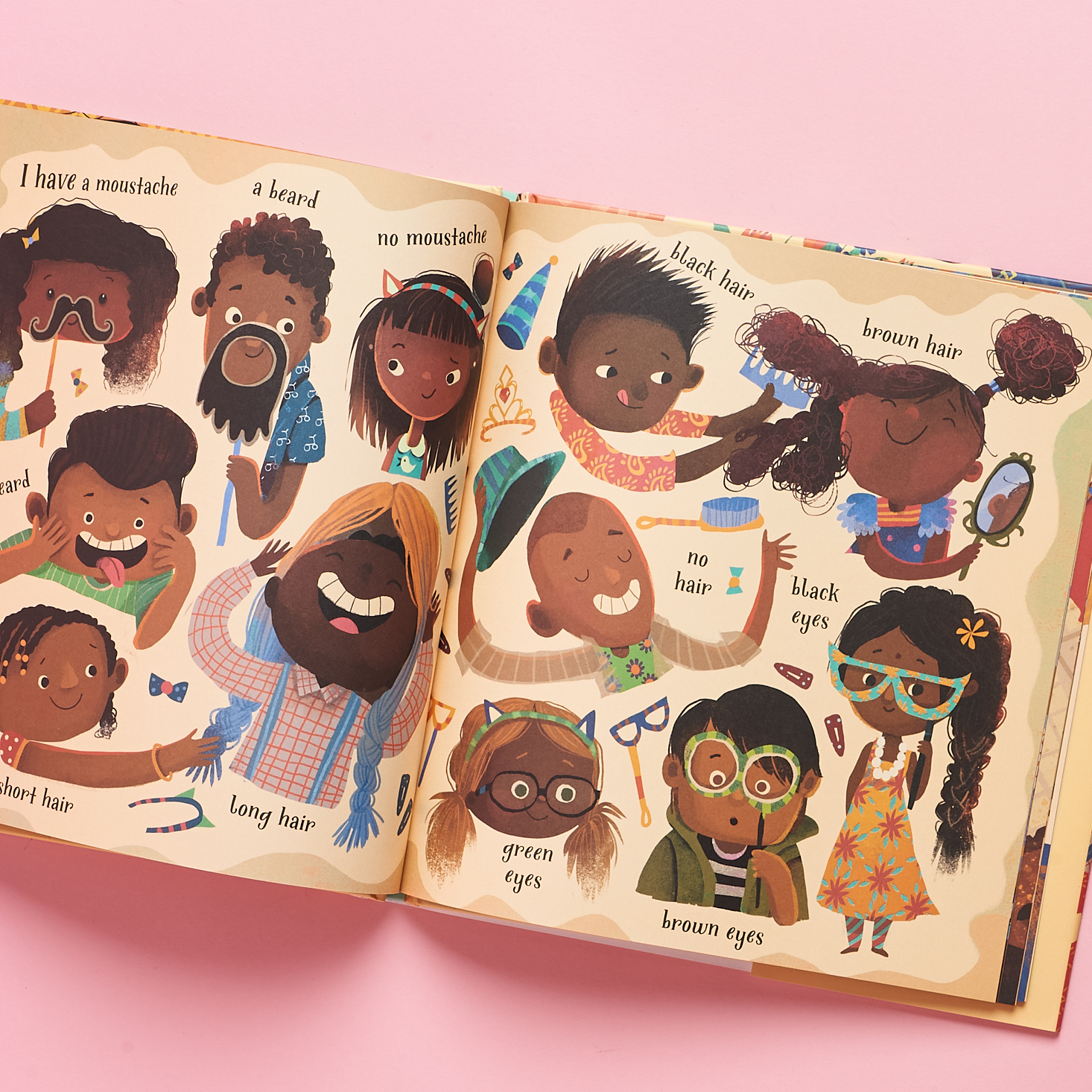
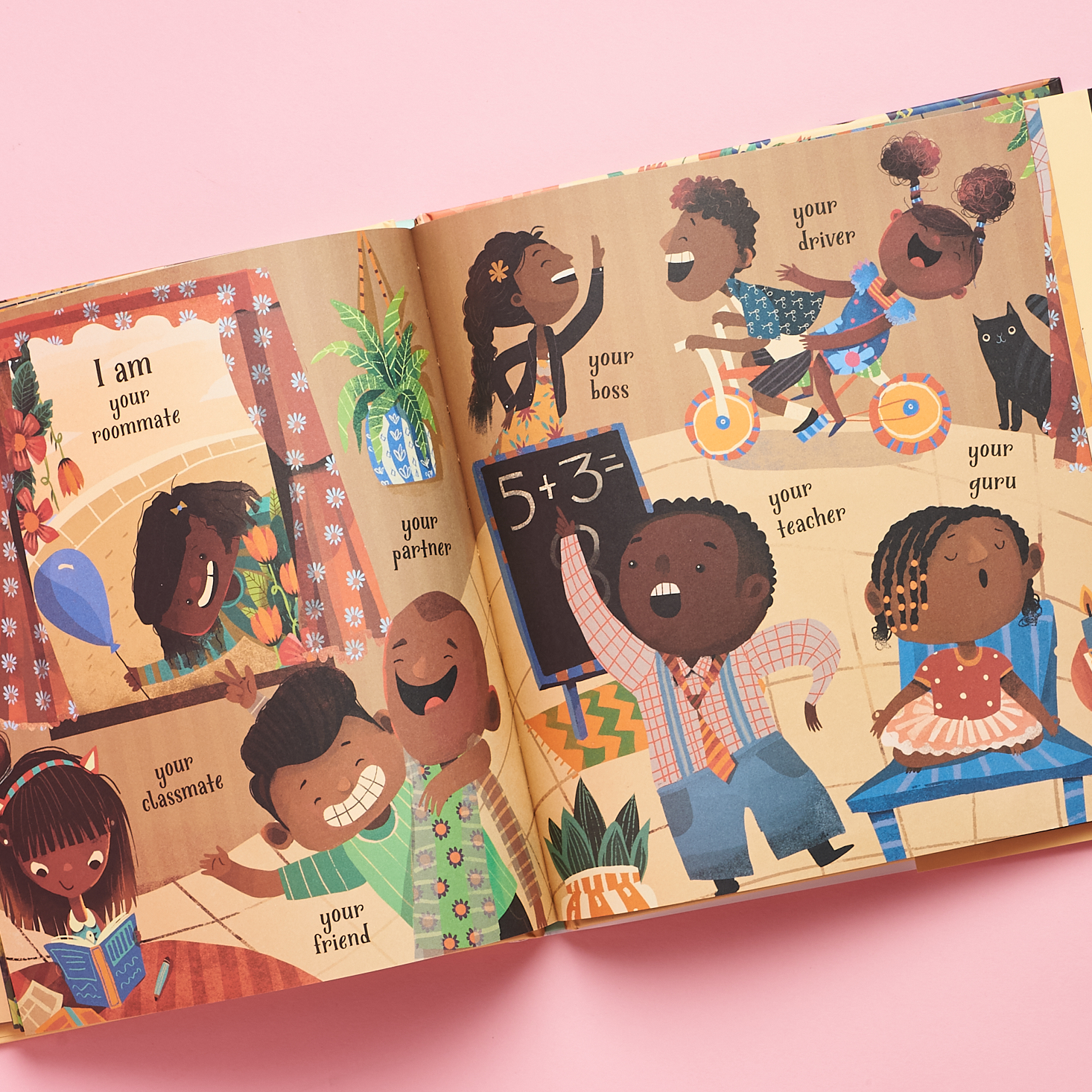

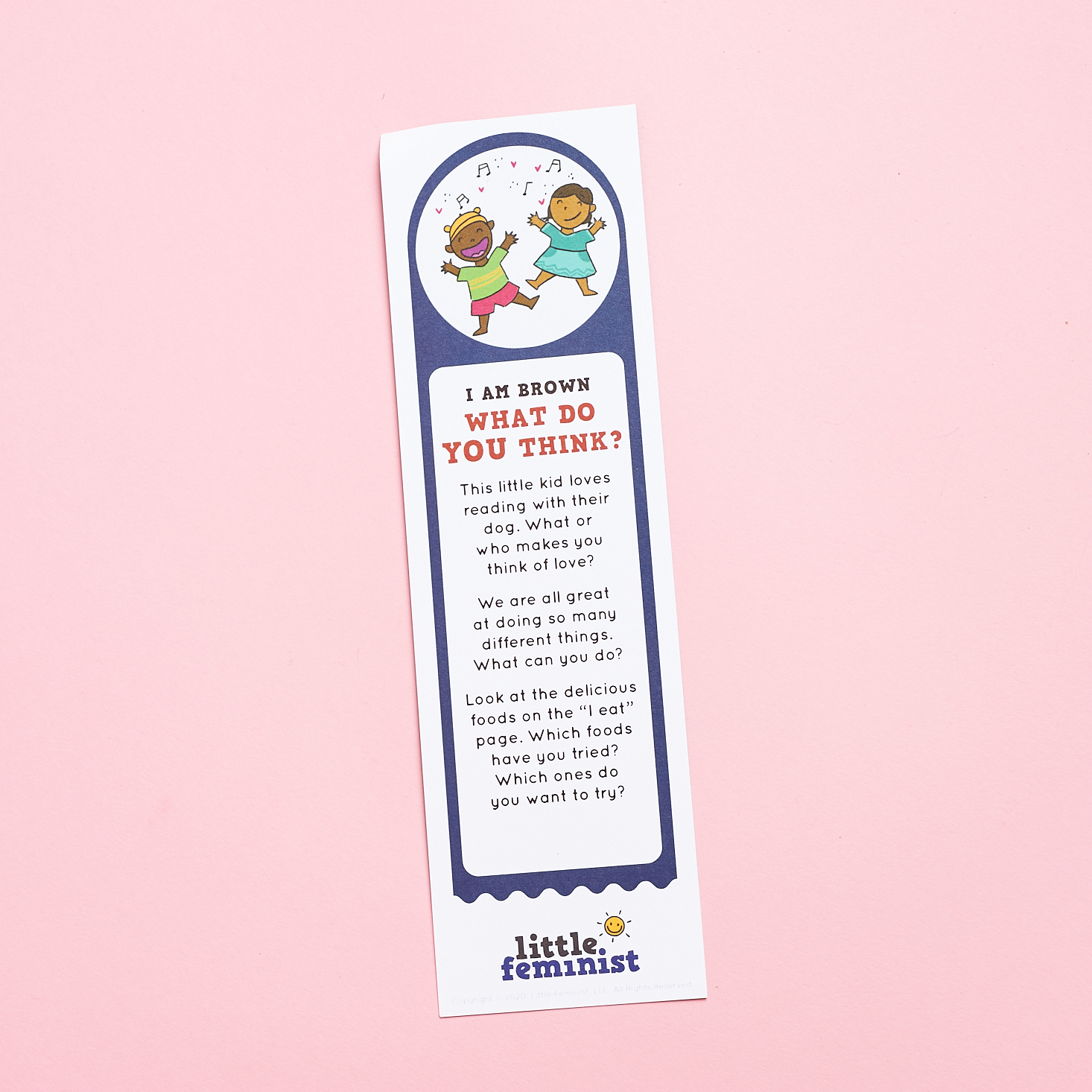



Please do not enter your email address in the Name field or in the comment content. Your email address will not be published. Required fields are marked *. Remember to post with kindness and respect. Comments with offensive language, cruelness to others, etc will not be approved. See our full comment policy here.